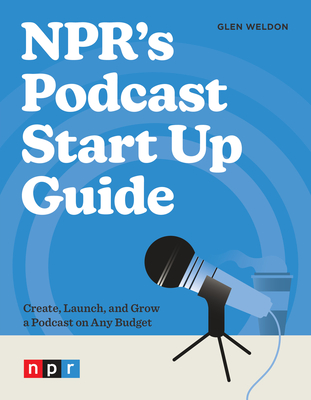20339-2: Advanced Technologies of SharePoint 2016 Training in Port Arthur
|
We offer private customized training for groups of 3 or more attendees.
|
||
Course Description |
||
| This five-day course will teach you how to plan, configure, and manage
the advanced features in a SharePoint 2016 environment. The special
areas of focus for this course include implementing high availability,
disaster recovery, service application architecture, and Microsoft
Business Connectivity Services. This course also focuses on social
computing features, productivity, and collaboration platforms and
features. Students also will learn about business intelligence
solutions, Enterprise Content Management, web content management
infrastructure, solutions, and apps. This course also covers how to
develop and implement a governance plan, and how to perform an upgrade
or a migration to SharePoint 2016. This is the second in a sequence of
two courses for IT Professionals and is aligned with the SharePoint 2016
IT Pro certification.
Course Length: 5 Days
Course Tuition: $2190 (US) |
||
Prerequisites |
|
| Two or more years of experience deploying and managing Windows Server 2012 or Windows 2008 environments; Experience with day-to-day Windows Server 2012 or Windows Server 2008 system administration management and maintenance tasks. Experience with Windows networking technologies and implementation. Experience with Active Directory® technologies and implementation. Experience with Windows Server virtualization technologies and implementation. Knowledge equivalent to the MCSA credentials of Windows Server 2008 or Windows Server 2012, or have equivalent knowledge. | |
Course Outline |
|
Module 1: Introduction to SharePoint 2016 This module describes the core architectural components of a SharePoint Server environment, and identifies the key new features and changes in SharePoint 2016.
Lessons
Lab: Reviewing core Microsoft SharePoint concepts
After completing this module, students will be able to:
Module 2: Introduction to hybrid scenarios for SharePoint 2016 This module describes the key hybrid features in SharePoint 2016, and the various hybrid options available in SharePoint 2016. This module helps you understand how to configure a solution that uses an outbound search topology.
Lessons
Lab: Configuring a Microsoft Office 365 tenant
Lab: Configuring one-way hybrid search and configuring OneDrive for Business
After completing this module, students will be able to:
Module 3: Planning and designing for business continuity management This module explains how to select an appropriate database server configuration to meet availability requirements. It also describes how to design a physical architecture and infrastructure to meet high-availability requirements. Finally, this module explains how to develop and implement a backup and restore strategy.
Lessons
Lab: Planning for high availability
Lab: Designing a backup and restore plan, and performing a backup and a restore
After completing this module, students will be able to:
Module 4: Planning and implementing Business Connectivity Services and Secure Store Service This module explains how to configure Business Connectivity Services (BCS), and describes how to configure and manage the Secure Store Service application. It also explains how you can configure and manage BCS models.
Lessons
Lab: Configuring Business Connectivity Services and the Secure Store Service
Lab: Managing Business Data Connectivity models
After completing this module, students will be able to:
Module 5: Configuring productivity services for a SharePoint 2016 deployment This module describes SharePoint apps and the supporting SharePoint infrastructure. This module also explains how to provision and configure SharePoint apps and app catalogs, and how to manage app usage within a SharePoint 2016 deployment. Additionally, this module describes how to provision Microsoft Access Services, Visio Services, Word Automation Services, PowerPoint Automation Services, and SharePoint Translation Services.
Lessons
Lab: Configuring and managing SharePoint apps and app catalogs
After completing this module, students will be able to:
Module 6: Managing solutions in a SharePoint 2016 deployment This module describes the purpose and structure of SharePoint features and solutions. In addition, it explains how to manage farm solutions in a SharePoint 2016 deployment, and how to manage sandbox solutions in a SharePoint 2016 deployment.
Lessons
Lab: Managing SharePoint 2016 solutions
After completing this module, students will be able to:
Module 7: Connecting people This module explains how to implement user profiles and configure synchronization for a SharePoint 2016 deployment, and how to plan and configure My Site and social features. This module also describes how to configure community sites.
Lessons
Lab: Configuring profile synchronization and My Sites
Lab: Configuring community sites
After completing this module, students will be able to:
Module 8: Planning and configuring web content management This module explains how to plan and configure a web content management infrastructure to meet business requirements. This module also describes how to configure managed navigation and product catalog sites, and how to configure support for multilingual sites. Additionally, it explains and how to plan and manage design and customization for publishing sites, and how to plan and configure support for mobile users.
Lessons
Lab: Configuring managed navigation and catalog sites
Lab: Configuring device channels
After completing this module, students will be able to:
Module 9: Planning and configuring Enterprise Content Management This module explains how to plan for management of content and documents, and how to plan for and configure eDiscovery. Additionally, it describes how to plan for records management and compliance.
Lessons
Lab: Configuring eDiscovery in SharePoint 2016
Lab: Configuring records management in SharePoint 2016
Module 10: Planning and configuring business intelligence solutions This module explains how to plan a business intelligence (BI) architecture for a SharePoint 2016 deployment, and how to deploy and manage BI services.
Lessons
Lab: Configuring PowerPivot for SharePoint 2016
After completing this module, students will be able to:
Module 11: Planning and configuring work management and productivity This module explains how to configure connections to enterprise server platforms, and how to plan and configure productivity and collaboration features. This module also explains how to plan and configure composite solutions in SharePoint 2016.
Lessons
Lab: Configuring project sites
Lab: Configuring a workflow
After completing this module, students will be able to:
Module 12: Upgrading and migrating to SharePoint 2016 This module explains how to plan an upgrade or migration to SharePoint 2016. In addition, it explains how to manage site collections are how to upgrade them to SharePoint 2016. Finally, the module describes how to upgrade advanced content from SharePoint Server 2013 to SharePoint 2016.
Lessons
Lab: Performing a content database migration and upgrade from Microsoft SharePoint Server 2013
Lab: Managing site collection upgrades
After completing this module, students will be able to:
Upgrade advanced content from SharePoint Server 2013 to SharePoint 2016. |
Course Directory [training on all levels]
- .NET Classes
- Agile/Scrum Classes
- AI Classes
- Ajax Classes
- Android and iPhone Programming Classes
- Blaze Advisor Classes
- C Programming Classes
- C# Programming Classes
- C++ Programming Classes
- Cisco Classes
- Cloud Classes
- CompTIA Classes
- Crystal Reports Classes
- Design Patterns Classes
- DevOps Classes
- Foundations of Web Design & Web Authoring Classes
- Git, Jira, Wicket, Gradle, Tableau Classes
- IBM Classes
- Java Programming Classes
- JBoss Administration Classes
- JUnit, TDD, CPTC, Web Penetration Classes
- Linux Unix Classes
- Machine Learning Classes
- Microsoft Classes
- Microsoft Development Classes
- Microsoft SQL Server Classes
- Microsoft Team Foundation Server Classes
- Microsoft Windows Server Classes
- Oracle, MySQL, Cassandra, Hadoop Database Classes
- Perl Programming Classes
- Python Programming Classes
- Ruby Programming Classes
- Security Classes
- SharePoint Classes
- SOA Classes
- Tcl, Awk, Bash, Shell Classes
- UML Classes
- VMWare Classes
- Web Development Classes
- Web Services Classes
- Weblogic Administration Classes
- XML Classes
- VMware vSphere 8.0 Skill Up
27 October, 2025 - 31 October, 2025 - Introduction to Spring 6, Spring Boot 3, and Spring REST
15 December, 2025 - 19 December, 2025 - OpenShift Fundamentals
6 October, 2025 - 8 October, 2025 - RED HAT ENTERPRISE LINUX SYSTEMS ADMIN I
3 November, 2025 - 7 November, 2025 - Object-Oriented Programming in C# Rev. 6.1
15 September, 2025 - 19 September, 2025 - See our complete public course listing






